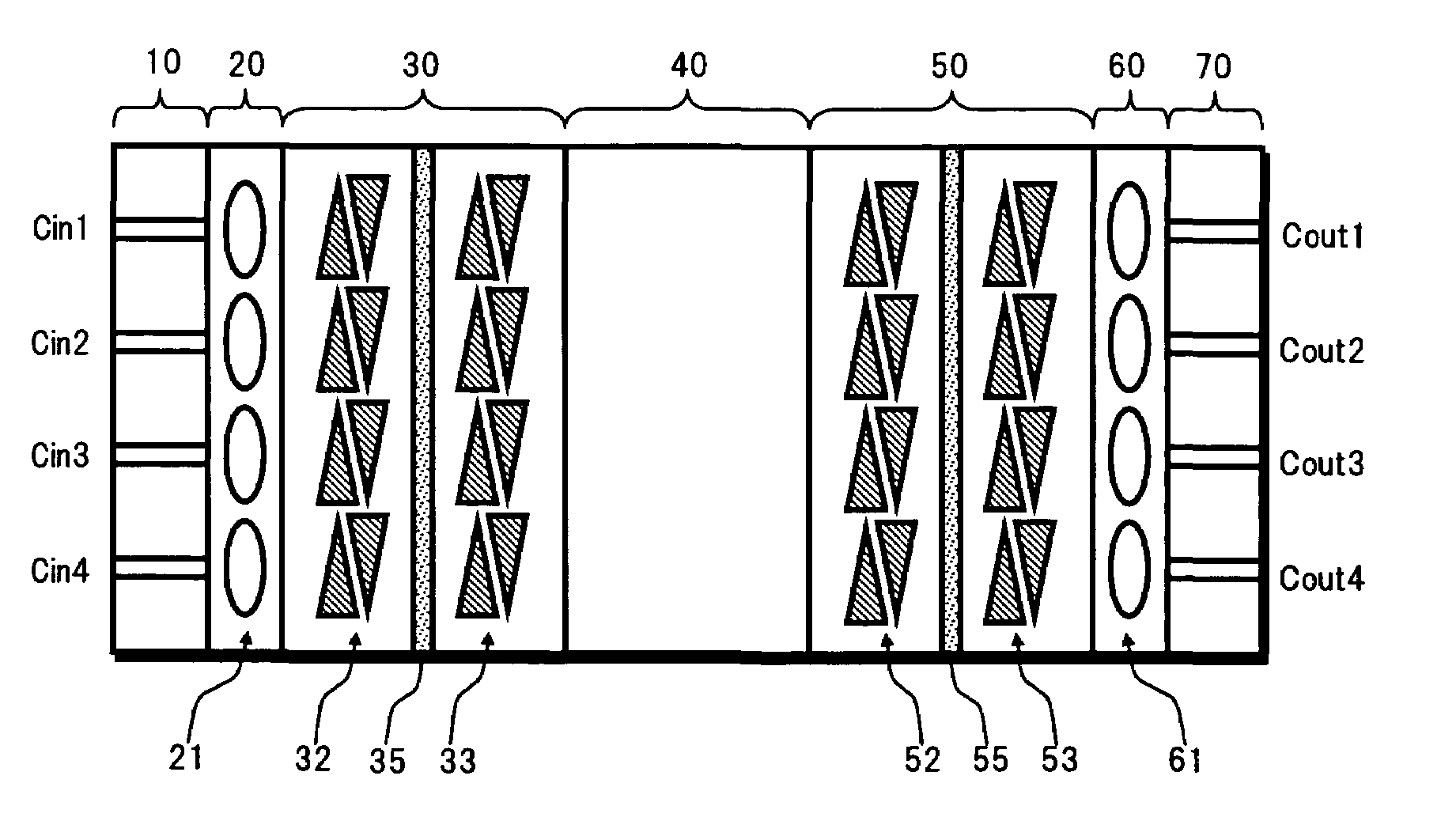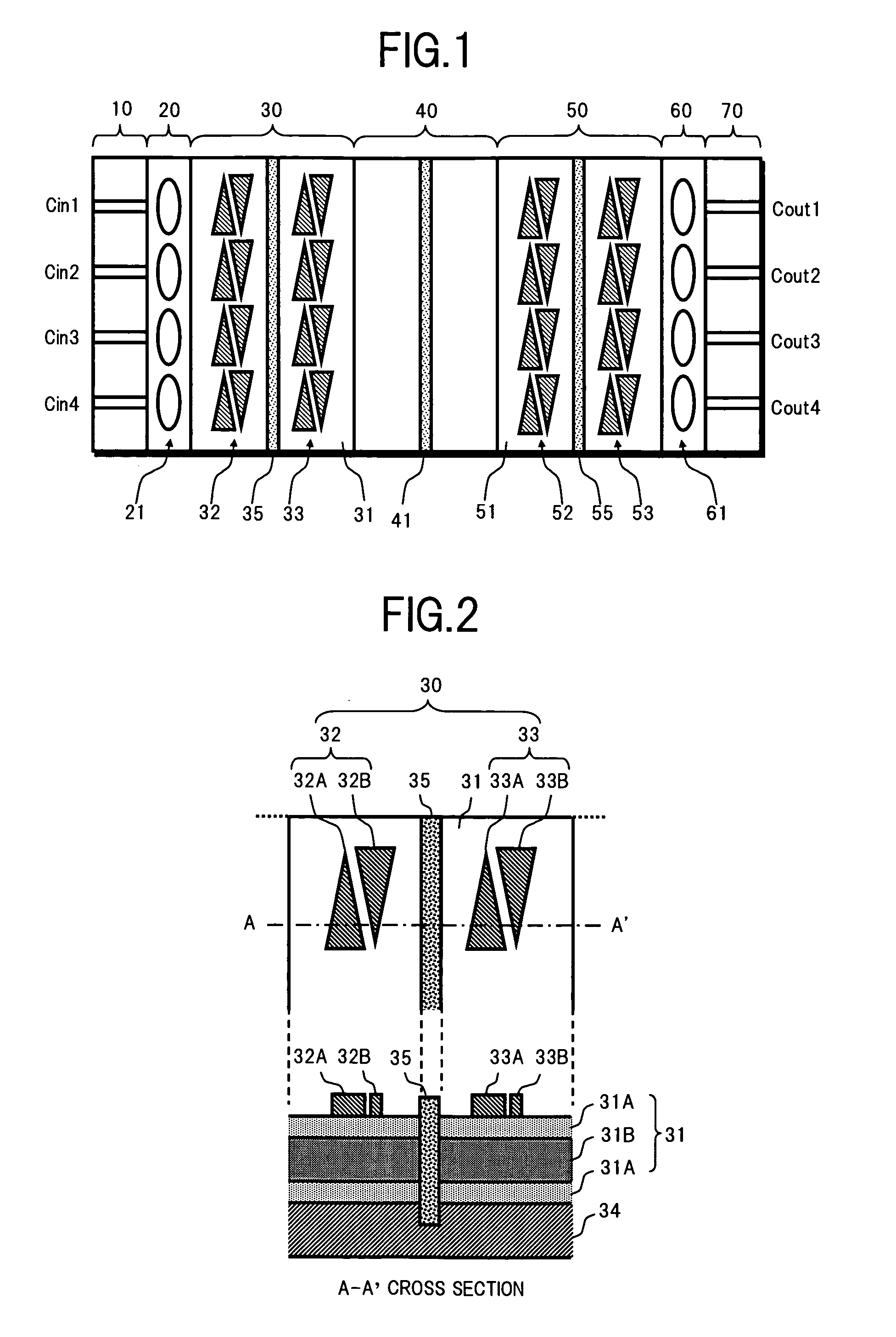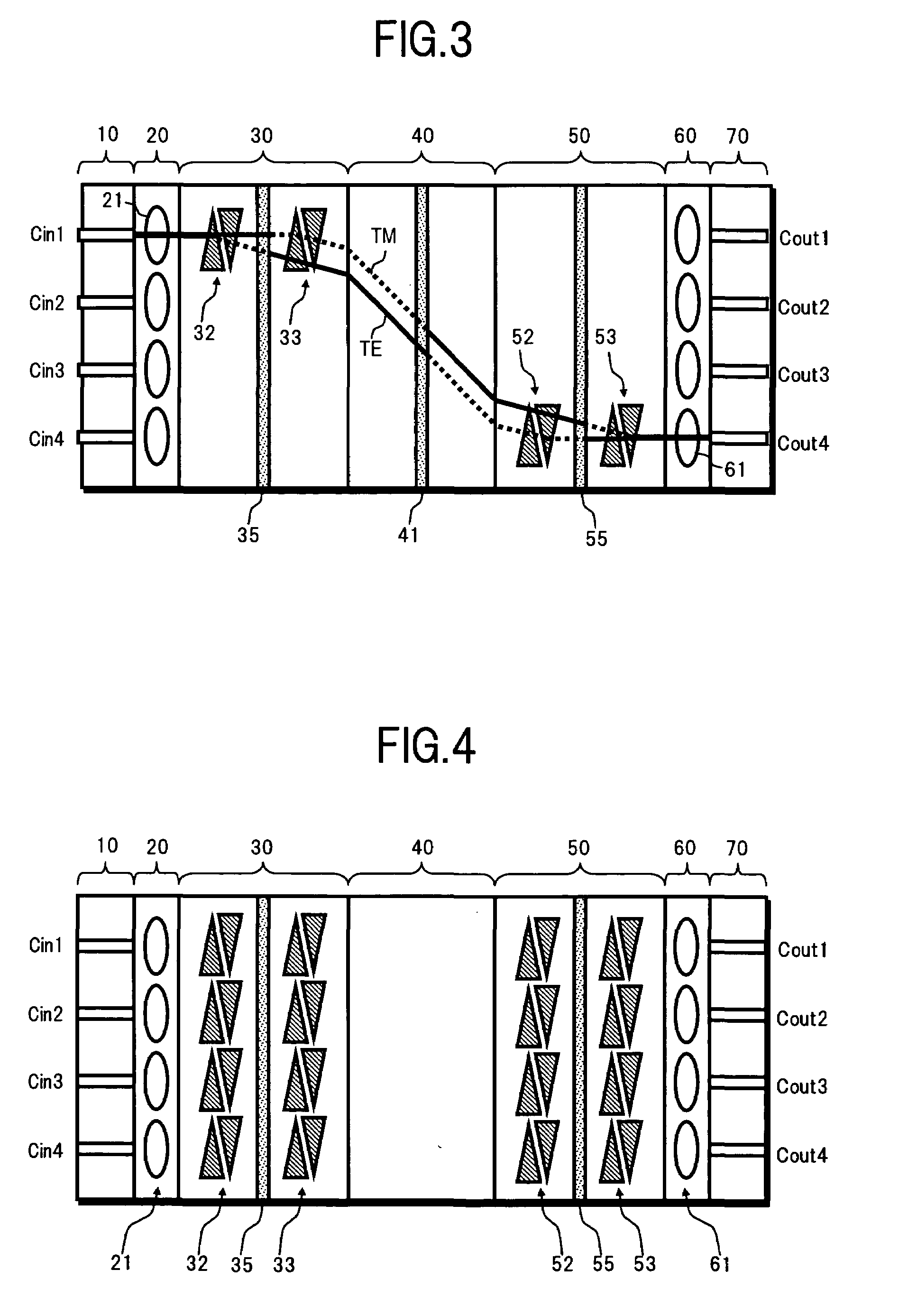Optical switch
a technology of optical switch and waveguide, which is applied in the field of optical switch, can solve the problems of increasing the loss of light which is guided to the desired output channel waveguide, and achieve the effects of low loss, large deflection angle and low loss
- Summary
- Abstract
- Description
- Claims
- Application Information
AI Technical Summary
Benefits of technology
Problems solved by technology
Method used
Image
Examples
Embodiment Construction
[0029]Hereinafter, embodiments of the present invention will be described with reference to drawings. The same reference numerals denote the same or equivalent parts in all drawings.
[0030]FIG. 1 is a top view showing a configuration of an optical switch according to the present invention.
[0031]In FIG. 1, the present optical switch comprises, for example: an optical input section 10; a collimate section 20; a first optical deflecting section 30 as first optical deflecting unit; a slab type optical waveguide section 40 as slab type optical waveguide unit; a second optical deflecting section 50 as second optical deflecting unit; an optical condensing section 60; and an optical output section 70.
[0032]The optical input section 10 is made up by forming a plurality (here, four, for example) of input channel waveguides Cin1 to Cin4 on a typical optical substrate. A light whose determination is switched by the present optical switch is incident on one end of each of the input channel wavegu...
PUM
 Login to View More
Login to View More Abstract
Description
Claims
Application Information
 Login to View More
Login to View More - R&D
- Intellectual Property
- Life Sciences
- Materials
- Tech Scout
- Unparalleled Data Quality
- Higher Quality Content
- 60% Fewer Hallucinations
Browse by: Latest US Patents, China's latest patents, Technical Efficacy Thesaurus, Application Domain, Technology Topic, Popular Technical Reports.
© 2025 PatSnap. All rights reserved.Legal|Privacy policy|Modern Slavery Act Transparency Statement|Sitemap|About US| Contact US: help@patsnap.com



